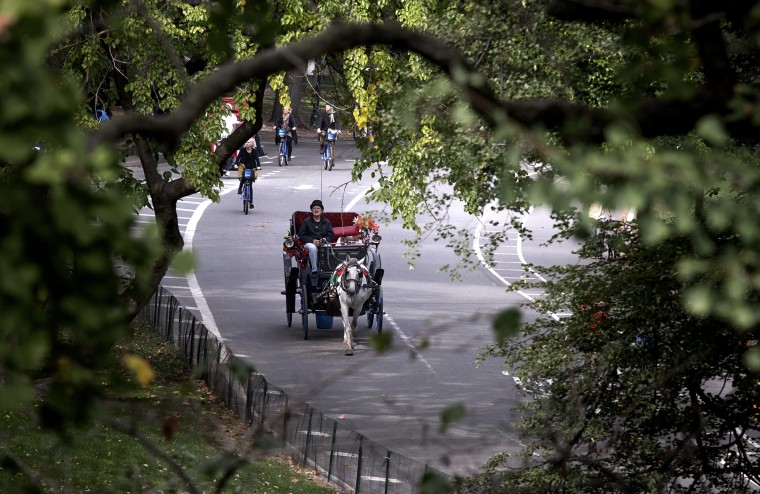A New York tradition is in danger of becoming a distant memory as the city’s new mayor prepares to send the horse-drawn carriages of Central Park off into the sunset.
“We are going to quickly and aggressively move to make horse carriages no longer a part of the landscape in New York City,” Mayor Bill de Blasio said earlier this month. “They are not humane... It’s over.”
De Blasio is expected to put his proposal in front of the city council for a vote within his first weeks in office and he believes he has the votes to pass the initiative. He hopes to replace the carriages with antique-like electric cars, and each carriage driver with a medallion would have the option to operate one of the cars--but with a catch: the 68 drivers who own a medallion to operate a carriage have already purchased them, but they would have to buy a new medallion to run an electric car.
According to Stephen Malone, spokesman for the Horse Carriage, that could cost up to $175,000. The medallion he uses for his horse and carriage has been in his family since his father began driving in 1964.
“They are going to saddle me with an unfounded, untested business and stick me with the debt for it,” Malone told msnbc.
“The one significant difference is that people come for the horse, not the tour," Malone said. "The horse is the star. He always has been and he always will be. Nobody is going to line up to take an electric car ride.”
The horse-drawn carriages currently bring in up to $19 million a year, according to the animal rights organization NYCLASS, but many days in the summer are off-limits for the horses because of high temperatures and unsafe conditions. NYCLASS says that won’t be an issue with the antique-style cars. De Blasio’s plan estimates the cars would produce $30 million in profits because they could operate year round.
De Blasio and NYCLASS have argued the carriages are inhumane and cruel to the horses, a sentiment also agreed upon by the ASPCA. The organization believes that the use of carriage horses in 21st century New York is “unnatural, unnecessary, and an undeniable strain on the horses’ quality of life.”
“It’s the year 2014,” Allie Feldman of NYCLASS told msnbc. “There’s no reason to have a horse drag a tourist around the city anymore. There are so many things to do in New York City without putting an animal at risk. New York City is better than this.”
The horse-carriage industry is closely monitored by the ASPCA, the New York State Department of Health, and the New York Police Department--from spontaneous inspections of the stables to required health exams for the horses.
Some say the new mayor’s eagerness to eliminate the industry is tied as much to the purse strings than his heart strings: at least four stables which house more than 200 horses take up valuable real estate along New York’s West Side. NYCLASS co-founder and president Steve Nislick, a strong advocate for de Blasio's proposal, is a retired property developer who owns more than 40 parking garage and storage unit properties throughout New York and New Jersey.
Feldman brushed off questions about Nislick and NYCLASS. “Steve has been an animal rights philanthropist for a very long time…If he wanted to buy the land the stables are on, he would just buy the stables.” Several attempts by msnbc to reach de Blasio’s office for comment were unsuccessful.
Both the ASPCA and NYCLASS say homes have been found for each of the horses if the proposal does succeed, but the drivers who own their horses may have to give them up.
“The unconstitutionality of it is they want to steal my horse from me,” Malone said. “We’re in the fight of our lives. We’re the little guys in this David and Goliath fight.”
